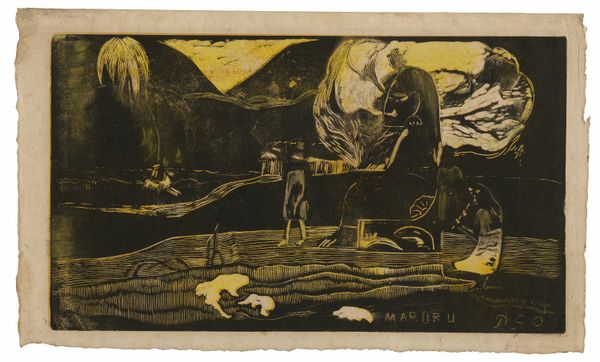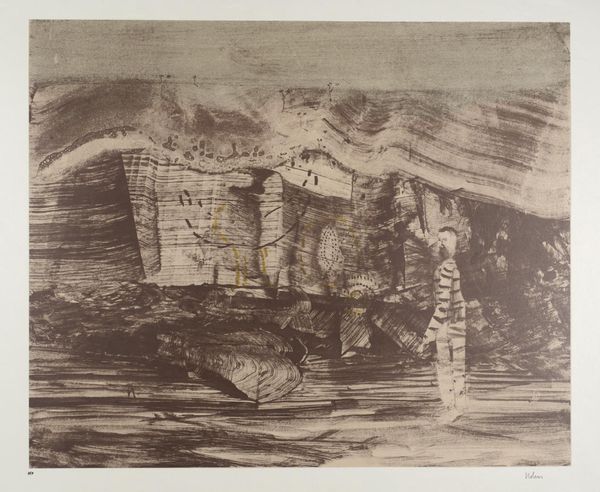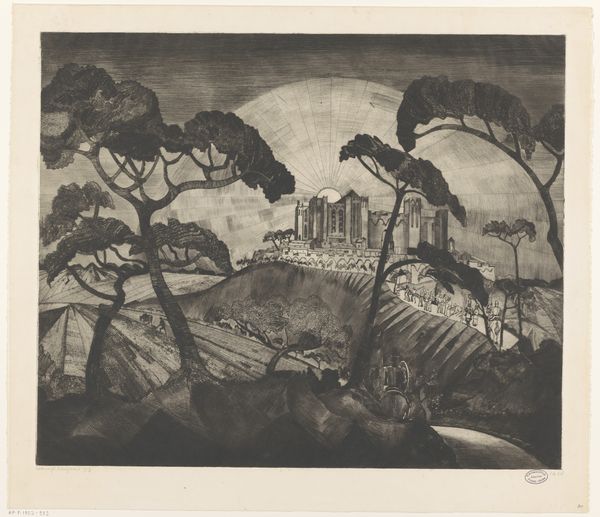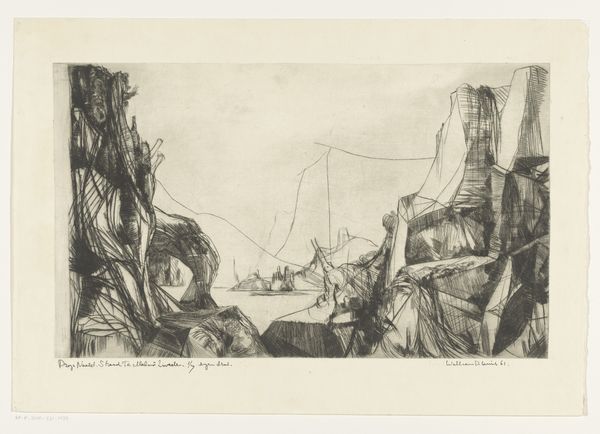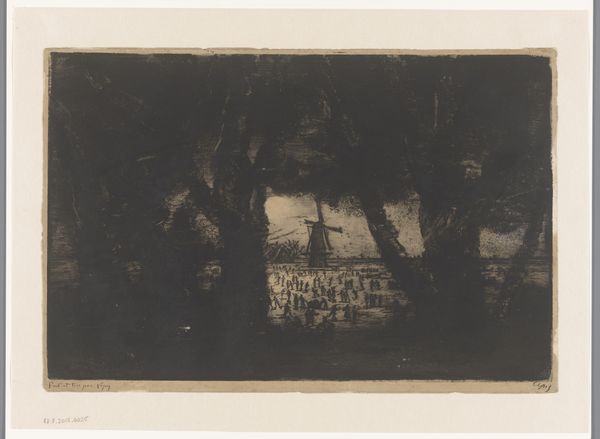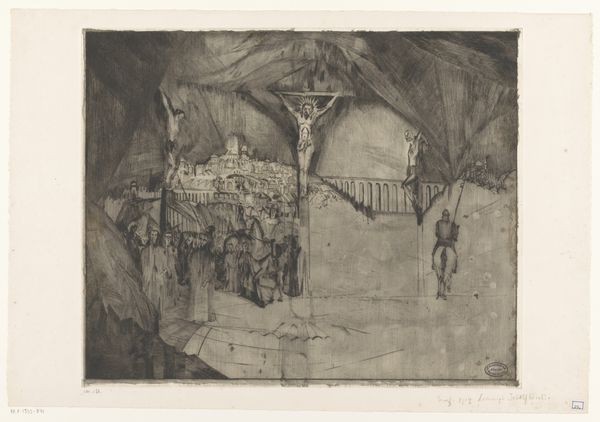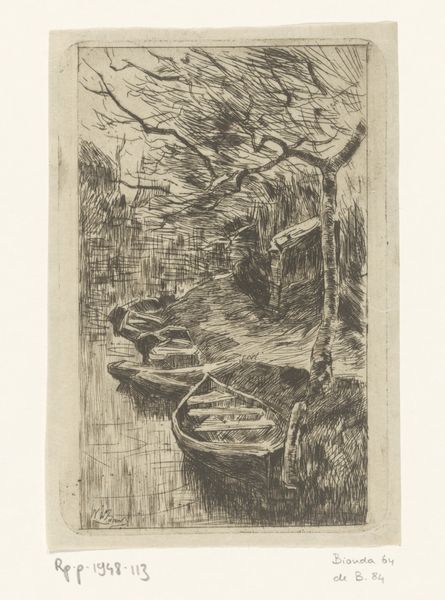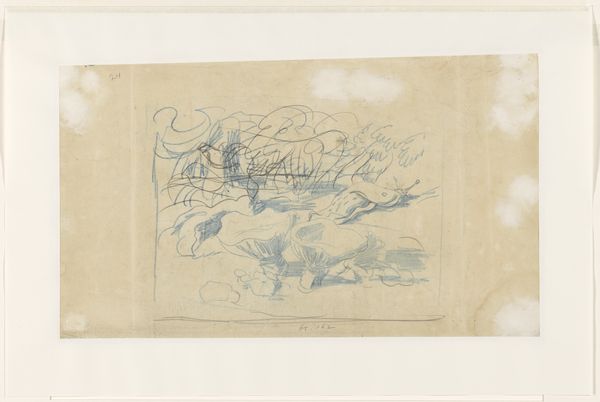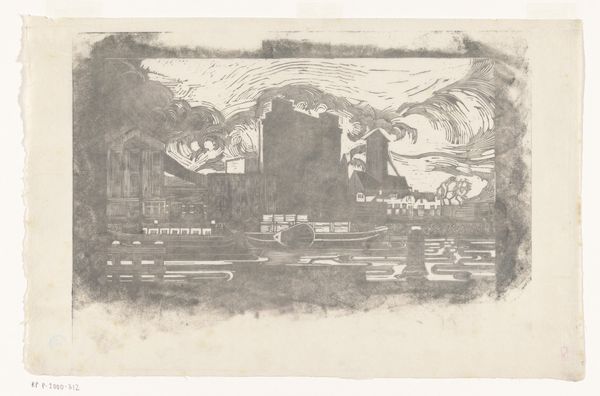
Dimensions: 495 × 650 mm (plate); 580 × 790 mm (sheet)
Copyright: Public Domain
Edvard Munch created the etching, "The Garden at Night," using a drypoint technique to create its stark contrasts. Munch, who lived from 1863 to 1944, was working in a Norway experiencing rapid industrialization and social change, a world grappling with evolving ideas about identity, particularly masculinity, femininity, and sexuality. In the print, the bare female figure is placed in a garden where a ghostlike figure looms above, their features melding into the sky. The artist had strong ties to the bohemian circles of Kristiania, now Oslo, where discussions around free love and the reevaluation of traditional gender roles were popular. Munch's own struggles with mental health and relationships shaped his art deeply, infusing it with a sense of isolation and emotional intensity. The stark contrast between the ethereal female nude and the haunting natural landscape, creates a dream-like and deeply unsettling atmosphere. It’s a powerful statement on the human condition, reflecting the social anxieties of the late 19th and early 20th centuries.
Comments
No comments
Be the first to comment and join the conversation on the ultimate creative platform.
